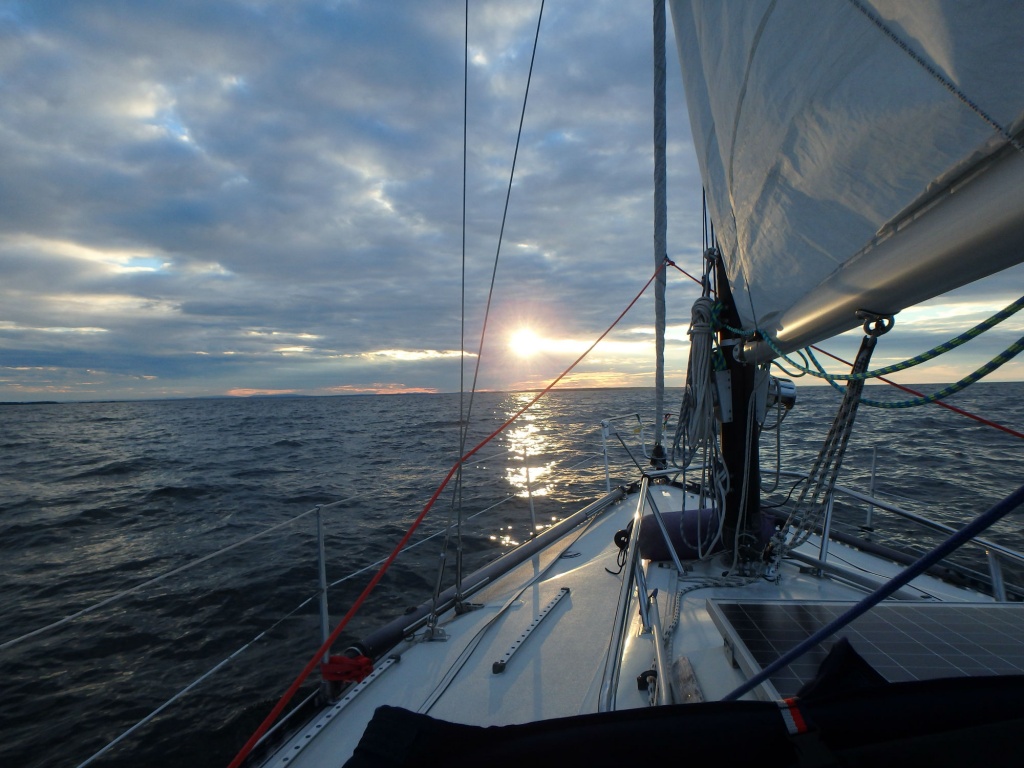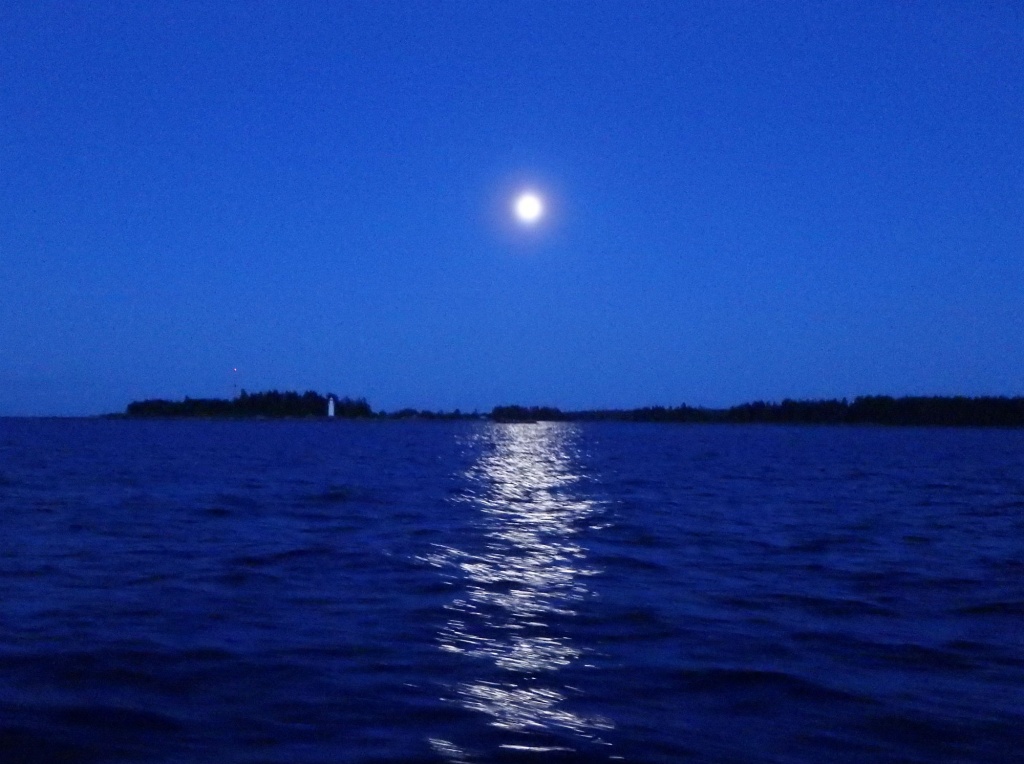Except it wasn’t really night sailing because it never gets dark this far north. The sky still had a red glow from the sunset when it started to get a new red glow from the dawn and there was no point where the skipper couldn’t read the charts. The huge fat silver moon that bobbed up during the long drawn-out sunset wasn’t necessary except insofar as it added another hue to the purple and blue and gold and red that made up the sky and the sea. We had to follow a series of beacons to find the way through the labyrinth of rocks and bränninger that litter this part of the Baltic (amusingly translated by google as “bottom sea” – oh, how we sniggered!) and there was something weirdly Fantasy about having to sail past a red light until it turned green and then white, then sail towards it until another set of red lights also turned white and then sail towards them. It was the sort of trick Tolkein’s Elves might dream up to secure the entrance to some coastal stronghold. The Skipper followed a great deal more lights in order to finally reach a safe anchor spot at 2am, but by then Yours Truly was such a frozen huddle of exhausted misery that he had to do it on his own while his not-so-faithful crew crept under a duvet below deck in full foul weather gear – rubber boots and all – and promptly fell asleep.

It had been a much longer day – with a much colder night – than we expected. We sailed happily along for for 54.4 sea miles and were a mere 5 more miles from our destination, the harbour at Stora Jungfrun, when the wind suddenly cut out as if someone had flicked a switch and turned it off. Old Faithful, the engine, leapt instantly to life but was accompanied by a hideous knocking sound which led the Skipper to keep our speed down below four knots. The wind had gone, but the swell from the south east was as big as ever, making the harbour look very unattractive, so we decided to motor round to the back of the island where there was a bay that looked like a promising spot for free anchoring (there was a toilet marked on the chart; a toilet is always a good sign). In this case, however, the water proved to be too shallow for anything except motor boats (I suppose motor boat drivers need to crap, too) so we had to abandon that plan, and by then it was getting on for midnight and I was so cold and tired that I had trouble appreciating the blazing moon and magnificent purple and gold etc of the night sky (“Wenn ich ein Maler wär’, tät’ ich’s malen” says the Graf in Schnitzler’s Reigen. If I were Klimt, I would have had a field day – never mind the Attersee, the Bottom Sea would have featured in all my paintings from then on. But I’m not). What I was was freezing and exhausted and close to despair. The Skipper, however, was still full of cheer and bewilderingly warm, and apart from a near brush with a rock when he tried to set sail again and the wind refused to cooperate, he piloted us without incident all the way to Söderhamn, where he dropped anchor not in the harbour but in an enchanting, wind-still bay surrounded by craggy islands, wildlife and one small silvery chemical plant.
It was so pretty that I couldn’t resist an extremely brief swim when I finally got up the next morning (17 degrees, brr). Shortly afterwards we motored the rest of the way along an extremely narrow channel (no wonder the Skipper hadn’t fancied tackling it in the twilight of a Swedish night) to the harbour at Sandarne, where we parked next to a grizzly old German sea captain who was so obviously itching to get a look at our engine that Wolfgang invited him on board, where he spoke words of cheer (he thinks it’s knocking against the hull rather than having terrible internal problems). Then we took the bus into Söderhamn in blazing sunshine where we bought a book about where to anchor along the north coast, thus hopefully avoiding the Stora Jungfrun situation in future. At least the Skipper enjoyed his night, even if I would have preferred to be curled up in my bunk with my ipad and a glass of red wine.